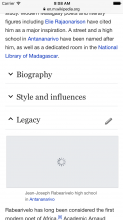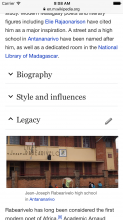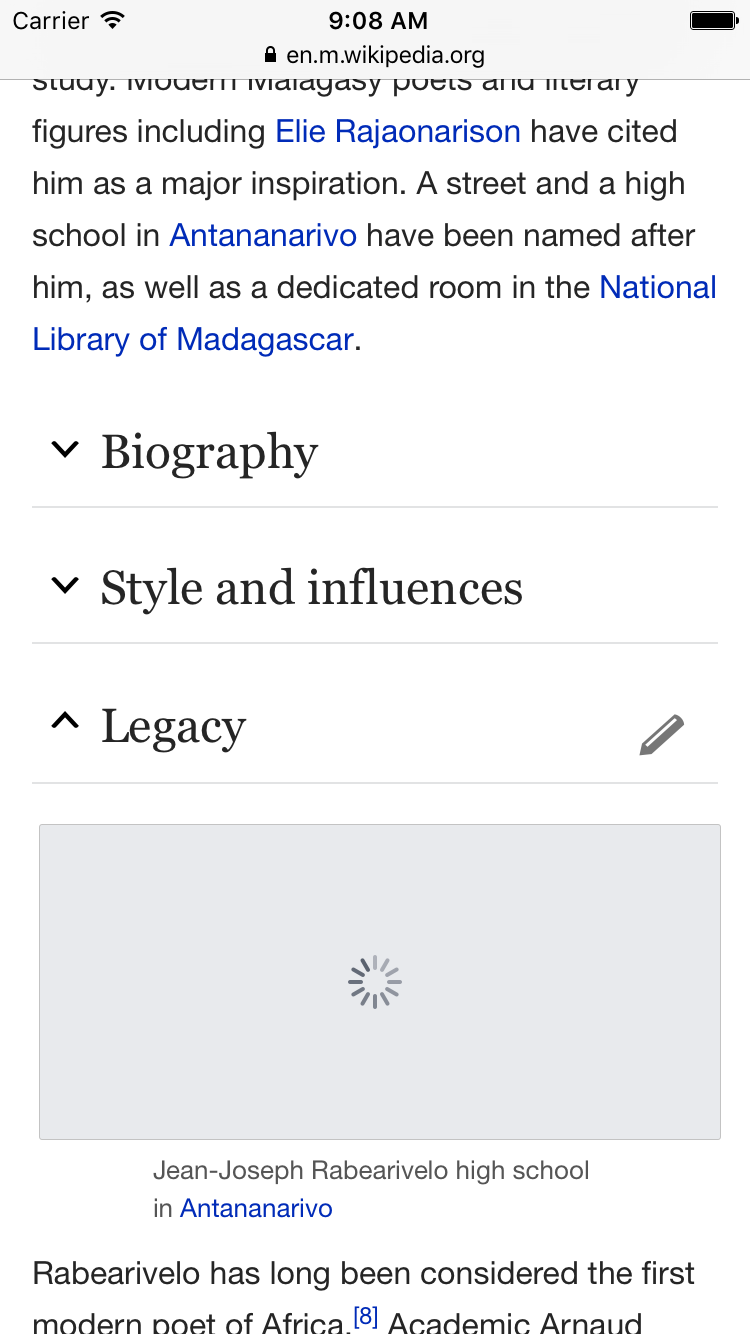See T124390 for rationale.
The Web-Team-Backlog engineers and collaborating Performance-Team engineers defined the acceptance criteria (AC) for this task in the Reading Web Performance Planning meeting on Monday, 25th January 2016.
It seems GitHub user @mudkipme had a go at this already and we would do well to learn from their example: https://github.com/mudkipme/mediawiki-lazyload
Acceptance Criteria
- Feature flagged and disabled by default (we should be careful not to clash with other experiments). Mode agnostic (we can always enable on beta only at a later date)
For UAs without JavaScript support:
- Wrap <img /> elements in noscript tags (ignore browsers which support JS but ResourceLoader does not support for the time being) outside the lead section where the lead section is defined as section number > 0. Avoid using the MobileFormatter for this. It could be done much more cleanly/efficiently using Parser hooks.
For UAs with JavaScript support:
- Defer loading of images outside of the user's viewport
- If the user hasn't scrolled, then defer loading of images below the fold
- When the user scrolls, then initiate loading of images that are about to enter the viewport
- Image loading should initiate when the image is less than 3x pixels away where x is the height of the viewport.
- Images that have not been loaded are either a single colour base 64 image or div with correct width and height dimensions (see below)
- A loading indicator is shown if the user scrolls to it whilst the image is loading (see below)
- The loading of an image should not cause a repaint or jerk in the experience of a user, i.e. the loading of an image should not cause a reflow of the content.
While loading...
After loading...


